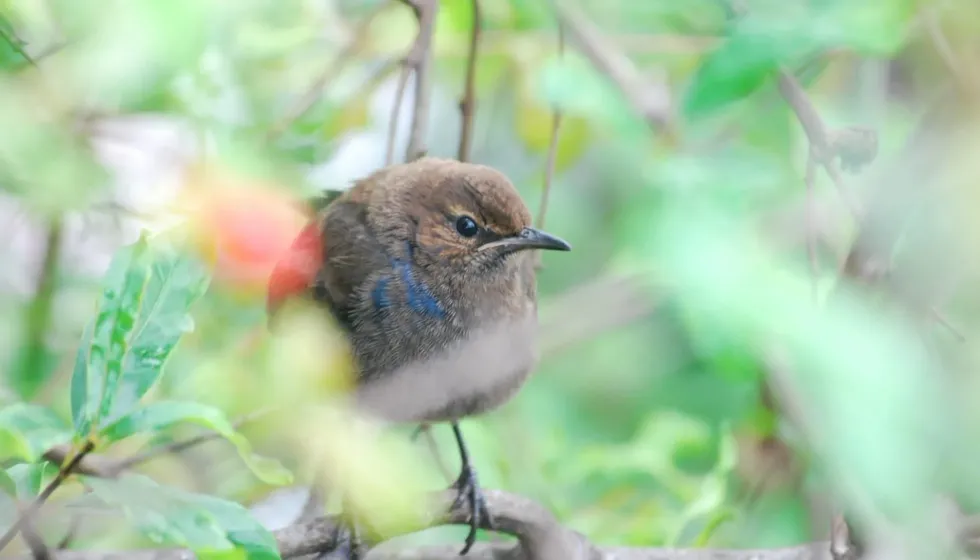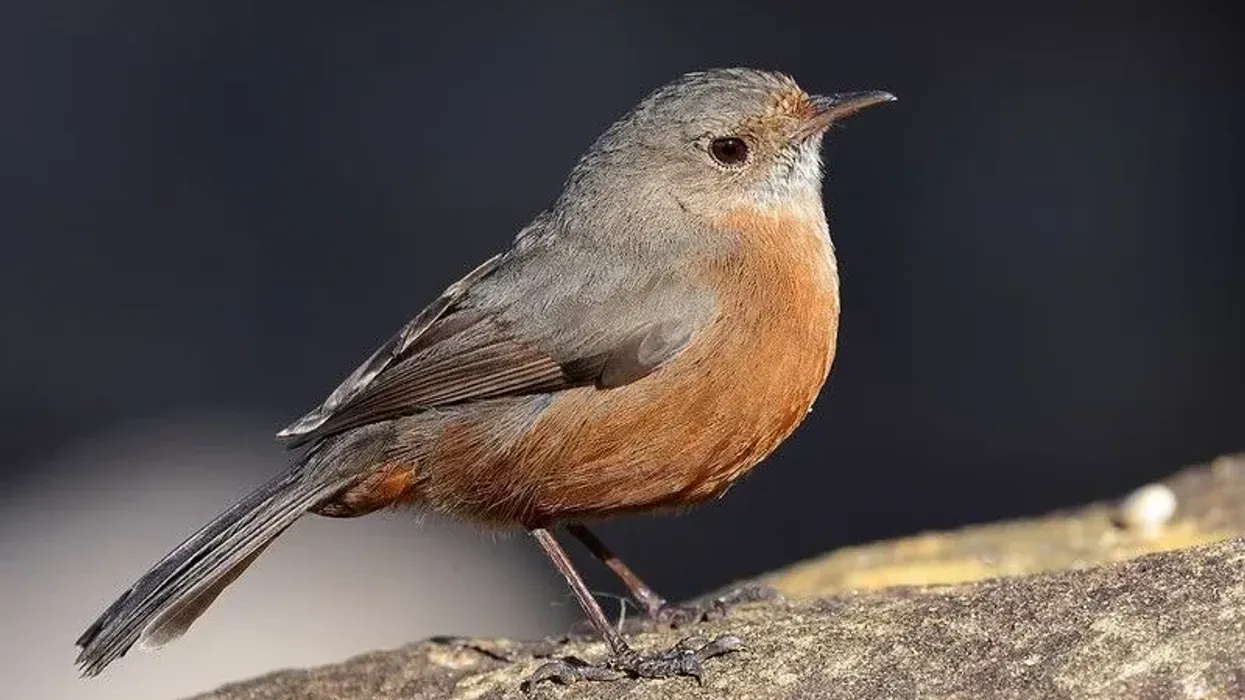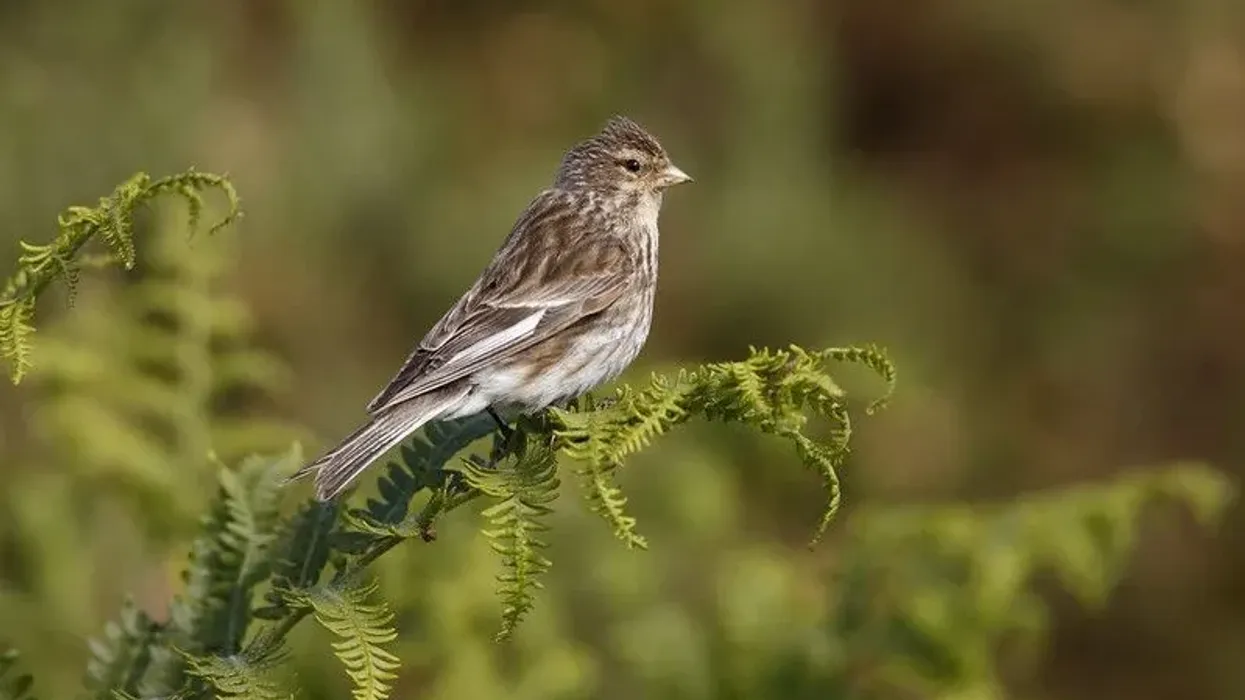The magnificent Indian robin species can be found in open spaces within India and across Pakistan. They form part of the Muscicapidae family of world birds. They love habitats with open scrub forest floors and enjoy building nests in open holes within a tree hollow or between bricks.
These robins are mostly dark brown and black in color, with a glossy plumage and a long undertail. Males are easily identifiable as they have a white shoulder patch.
Interestingly, these birds vary in color depending on what part of India they are from. They enjoy a varied diet of common insects and often wait until the evening to go out and catch these bugs.
These little birds are generally harmless unless you disturb a male during the breeding season! They are very competitive and will flap their wings intensely to warn off predators.
If you are looking for more great facts about these birds, take a look at our fact file here for all the specific details you need. If you are interested in facts about other species, take a look at our facts about the palm warbler and the amazing Anna's hummingbird.
Indian Robin Interesting Facts
What type of animal is an Indian robin?
An Indian robin is a bird, with the scientific name Copsychus Fulicatus. They are songbirds of Indian habitation and are a not too distant cousin of the European robin.
What class of animal does an Indian robin belong to?
The Indian robin (Copsychus Fulicatus) species belongs to the bird class of the animal kingdom. They form part of the family Muscicapidae. They were formerly known as Saxicoloides fulicata.
How many Indian robins are there in the world?
The exact population is not known of this species. However, according to BirdLife International, their population is increasing and is currently stable.
Where does an Indian robin live?
These robins live mostly in scrub woodland and grassy areas across India, Pakistan, and Sri Lanka. They are slightly different colors depending on their origin. Some scientists have named them under different subspecies.
What is an Indian robin's habitat?
This species of robins likes to live along the ground in stony areas and grass floor areas. They are often found in open forest areas hopping along with the scrub, looking for termites. They can also be found around the edges of human habitation.
Who do Indian robins live with?
Indian robins have been known to form flocks with fellow species when it is not their mating season. They also live alongside other common birds within the Indian subcontinent.
How long does an Indian robin live?
Although data is limited, it is believed a wild bird can live up to three or four years.
How do they reproduce?
The Indian robin breeding season is from December to September, however, it must be noted it varies depending on which area of India the birds live in. In the south of India, the breeding season is from April until June. Usually, the breeding season follows the rainy season.
A male (with a bright white shoulder patch) will often fight off competing males with fast wing flaps and a unique call. Indian robin males can be very aggressive around this period, and have even been known to attack their reflections!
They build nests in tree hollows, holes, or between rocks in the forest, lined with soft feathers. Only the females sit and incubate the eggs, and these will hatch after around 10-12 days.
The eggs vary somewhat in shape. Most are creamy colored, but some are pointed and reddish-brown. Both males and females take care of the eggs and they return to the same nesting site year after year.
What is their conservation status?
Over the years there have been extensive changes in Indian robin classification. They were often considered as part of the thrush (Turdidae) family of birds, alongside the eyebrowed thrush.
Nowadays they are known as old-world flycatcher birds, as part of the Muscicapidae family. Although they can only be found around habitats of India and Pakistan, they are not considered an endangered or rare population. According to BirdLife International, they do not meet the threshold for vulnerable populations of birds of the world.
Indian Robin Fun Facts
What do Indian robins look like?
Males generally have a white shoulder patch with a reddish chestnut-colored undertail. Their tails are long for robins.
In this bird species, there are also variants in the color of their feathers from northern to southern India, with slightly different markings. Northern Indian robins have a brownish upper plumage of feathers, whereas, in the southern regions and in Sri Lanka, they are black. In all regions, females do not have a white shoulder patch.
Birds in northern areas are also bigger. In juveniles, the feathers are more of a mottled brown color.
How cute are they?
Both northern and southern Indian robins are cute birds, especially hatchlings. They have a pretty color combination of dark, shiny black-brown feathers and a pleasant song. Males are easily identifiable with a white shoulder patch and have more iridescent feathers than females.
How do they communicate?
They use a variety of bird calls to warn of predators or competing males. They also have songs for courtship. Male Indian robins also flap their wings to communicate danger and show aggression.
How big is an Indian robin?
An adult bird is approximately 7.5 in (19 cm) long. This is not very long, as this bird is around half the size of a crimson crested woodpecker.
How fast can an Indian robin fly?
The maximum speed this bird species can reach isn't known. They are non-migratory birds and data indicates in general that the American robin can reach up to 30 mph (48 kph).
How much does an Indian robin weigh?
This bird species weighs around 0.59 oz (16-17 g).
What are their male and female names of the species?
They are sexually dimorphic birds, which means that males and females of the Indian robin species have different markings. The male has a white shoulder patch and male and female birds do not each have a specific name.
What would you call a baby Indian robin?
A baby Indian robin can be named any of the general terms for infant birds. This includes hatchlings for newly hatched chicks, fledglings for birds that have just started flying, and juveniles once they reach adolescence.
What do they eat?
The Indian robin will generally wait until nighttime, when more insects are attracted to light, to hunt. As insectivorous birds, they eat the most common insects. However, they have been known to eat the odd baby lizard too. They forage through woodland scrub, looking for beetles and flies.
Are they poisonous?
The Indian robin is not a poisonous bird species and they are generally very tame towards humans. It's common to find this species hopping along the ground with their tail held upwards.
They are not poisonous to other birds of the world. However, males can be very aggressive to other males during the breeding season. On the other hand, other birds such as the hooded pitohui, are known to be extremely poisonous and lethal.
Would they make a good pet?
Indian robins are a wild bird species native to northern India, the south of India, and Sri Lanka; they are not pet birds. These birds require their natural habitat so they can thrive along the ground of the forest.
Did you know...
You may also find this species called by their old Latin name Saxicoloides fulicata or fulicatus. The Latin word 'fulicatus' means 'a dusty black color', just like the color of these beautiful birds. This species was formerly categorized as the genus Saxicoloides fulicata, but after much research, they are now placed with the genus Copsychus.
What is special about Indian robins?
Indian robins are unique to the Indian region of the world. They are found across India, Pakistan, and Sri Lanka. These robins are also special as they act as a sign of positive things in the future, as a symbol of new beginnings.
How does an Indian robin make its nest?
Indian robins forage the forest, searching along the ground for nest-building materials such as hair and feathers. This often includes snakeskin! Their nests are lined with feathers to make a cozy home for their baby robins. The female incubates the eggs until they hatch.
Here at Kidadl, we have carefully created lots of interesting family-friendly animal facts for everyone to discover! Learn more about some other birds from our ovenbird facts and common nighthawk facts pages.
You can even occupy yourself at home by coloring in one of our free printable Indian robin coloring pages.










